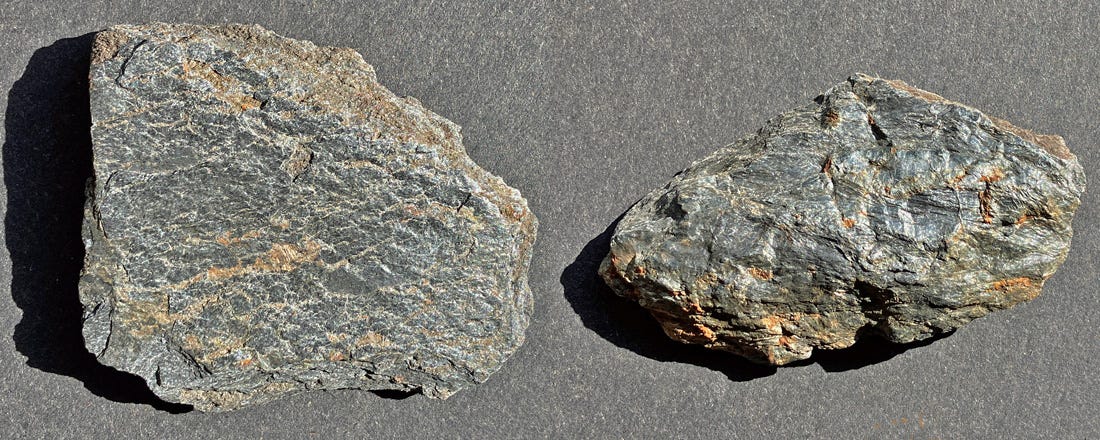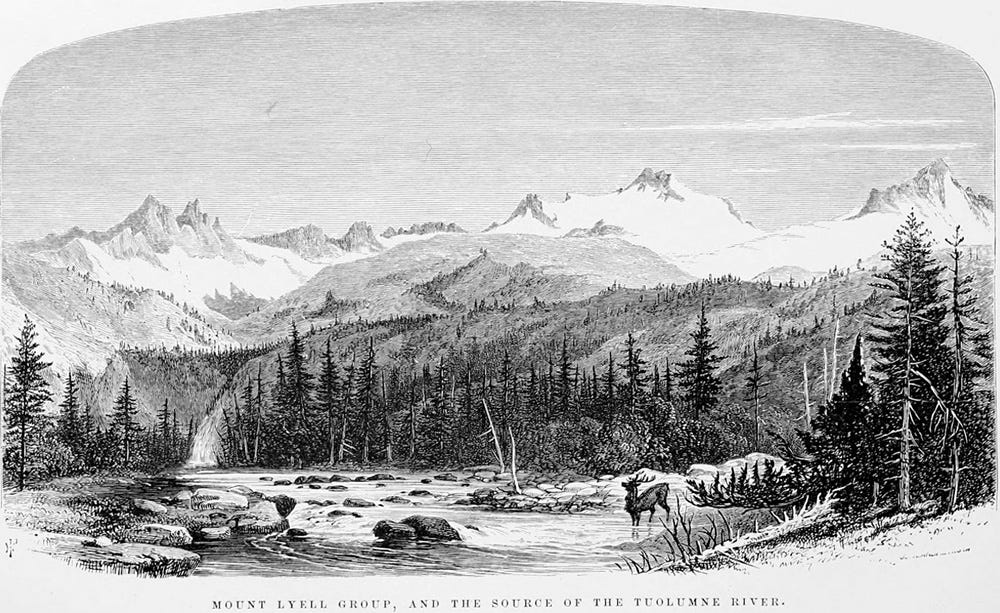Deeper Oakland: Reading, riding and returning
A look ahead at March and beyond; a look back at the 1830s.
Hello subscribers,
The coming month of March will be downtime as far as Oakland geology is concerned. Oh there’ll be blog posts on the 4th and 18th, but my main activity will be a trip to New Hampshire to hang out with scientists for a few days. Specifically, it’s the Northeastern Section meeting of the Geological Society of America. I’ve long had a fantasy of attending more of the GSA section meetings, and this year I’ll also be at the Cordilleran Section meeting, up in Spokane in May.
I’ll also be bringing a few rocks with me to put back in the roadcuts where I got them. These guys, a pair of Vermont phyllites . . .
and a pair of Vermont serpentinites.
In the meantime, I can always recommend Dennis Evanosky’s walking tours. This year he’s presenting seven different ones on the first Saturday of each month. This weekend, March 2, he’ll cover his home turf of the Laurel district starting at 10 a.m.; write to him at evanosky@gmail.com for registration info. Just ten bucks, and he’ll have his books for sale too.
Upcoming
I start April with a bit of surgery, so I’ll be easing into spring and summer activity, meaning public walks and talks. Last year was a rush of events to go with the publication of Deep Oakland; nowadays I’m less concerned with selling books. Thousands of Oaklanders and nearby residents have bought and read it, and with those seeds sown I’ll get back to doing the usual things at a lower intensity: poking around, reading, writing, speaking and leading walks. I also intend to do a lot of traveling. That said, in April I’m scheduled to lead the Northern California Science Writers Association around Lake Merritt and tell the Geological Society of the Oregon Country about deep Oakland.
Backgoing
When I moved Deeper Oakland to Substack, the backlist of previous newsletters from Tinyletter came with me. Since there were only sixteen issues at the time, I went and refreshed them, replacing the photos with larger and better images. If any of you, like me, were archiving issues in an email folder, you can delete it now! And if I refer you to something in a previous issue, I can link to it nicely. For instance, that scientific quilt I showed in the last issue has just won this year’s Data Viz Challenge, a contest of creative ways to communicate science run by the Big Ten Academic Alliance.
Reading
After watching it sit unread for decades, I took from my shelf a one-volume paperback abridgement of Charles Lyell’s Principles of Geology and am finding it rewarding. First published in 1830, the Principles is rightly regarded as the book that first made geology scientifically respectable. Its title echoing Newton’s Principia Mathematica, Lyell’s Principles assigned to generations of geologists a research program: an inventory of geological topics, a set of intellectual tools to apply to them, and a wide-ranging task list of problems to work on. He treated those topics in detail and supported them by many examples, presented in crystalline prose that earned it a wide readership among the educated public for most of the 19th century. The style is lawyerly, latinate and long-winded but clear. Mount Lyell in the Sierra Nevada was named for him.
Frontispiece from an 1865 edition of Lyell’s Principles of Geology (Wikipedia)
As I read Lyell, I feel a remarkable thinker at work. I admire his perspicacity at a time before we had firm answers to most aspects of Earth science. The Principles is no longer a book to learn geology from, but other lifers like me may enjoy seeing our familiar world through Lyell’s eyes and be reminded of the basic mysteries we still face, two centuries later. It’s good retirement reading; I seem to have a lot more on my shelves.






Pleasant reading.